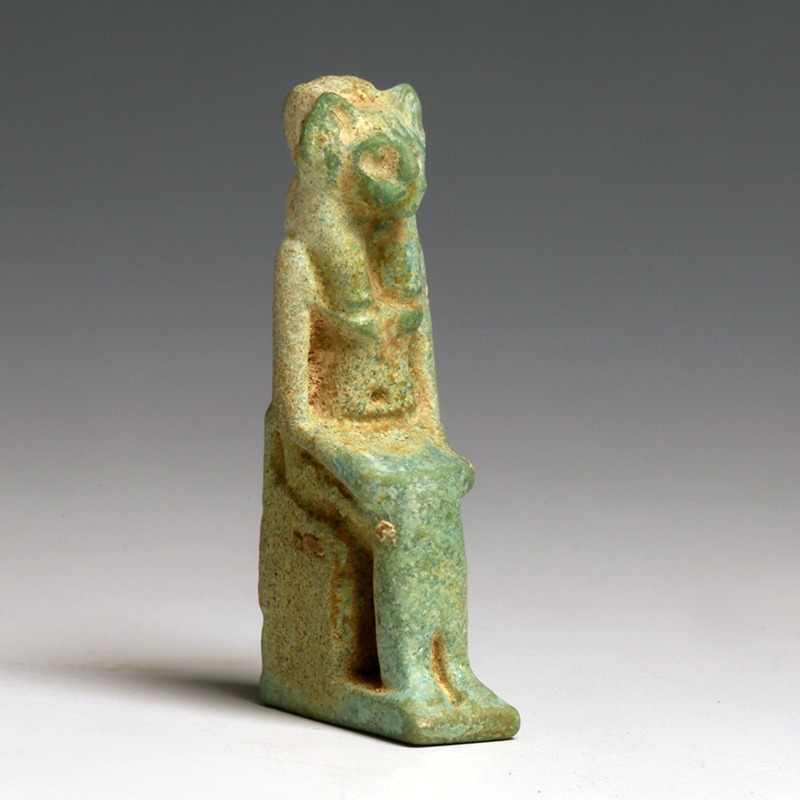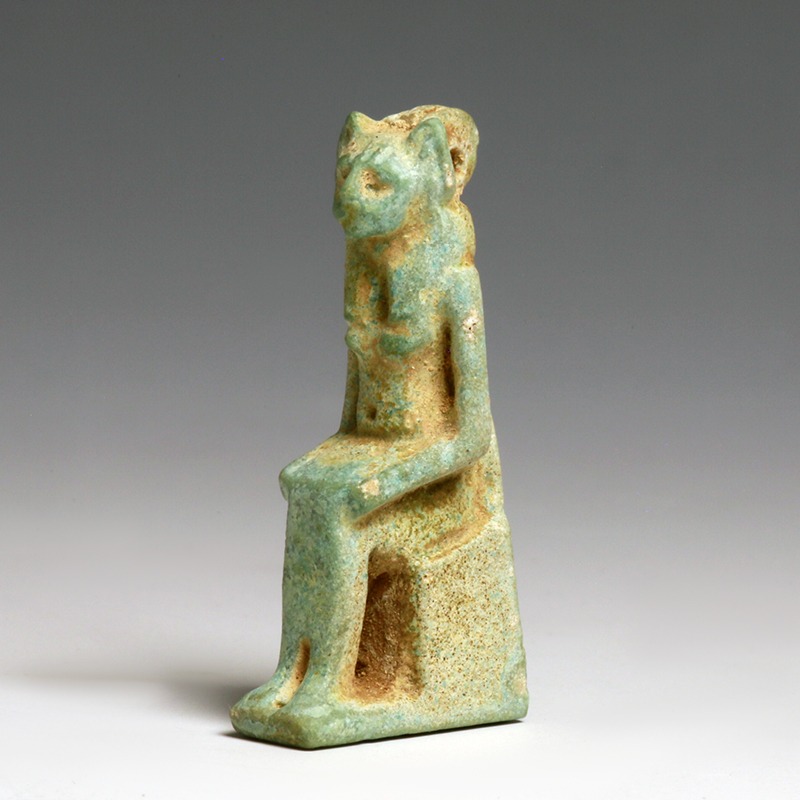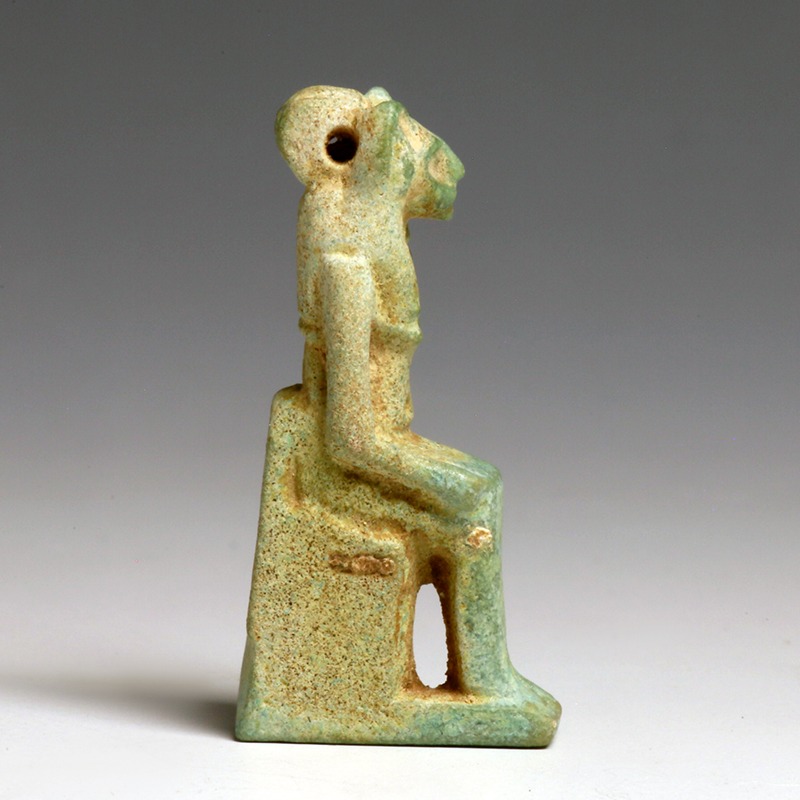The Egyptians wore amulets alongside other pieces of jewellery. They were decorative, but also served a practical purpose, being considered to bestow power and protection upon the wearer. Many of the amulets have been found inside the wrappings of mummies, as they were used to prepare the deceased for the afterlife.
Amulets held different meanings, depending on their type or form. Small amulets depicting gods and goddesses seem to have induced the protective powers of the deity. On the other hand, small representations of anatomical features or creatures suggest that the wearer required protection over a specific body part, or that he/she desired the skills of a particular animal. Amulets depicting animals were very common in the Old Kingdom Period, whilst representations of deities gained popularity in the Middle Kingdom.
Sekhmet was the fierce goddess of the Memphite area, forming a powerful trio with her husband, the creator-god Ptah, and their son, Nerfertum. Sekhmet was goddess of the sun and war: she symbolised the scorching heat of the sun, and brought plague and pestilence. She was seen as the fiercest of warriors, and was the protector of the pharaohs. It was said that the desert was caused by her breath alone, and she was rendered as a lion because this big cat was the bravest hunter known to the Egyptians.


